Was Mork the nicest character on television? A sweet, naïve and emotionally open alien from the planet Ork, his gentle and humorous adventures in 1970’s America were taken to the nation’s hearts. For the first series, anyway.
Mork’s actual first appearance was on that stalwart of US television programmes, Happy Days, as a part of Richie’s dream in the episode ‘My Favorite Orkan’. He was such a hit with the audience however that a new series was created around him, and Mork and Mindy arrived on screen.
The story was simple (surreal, but simple): Mork was sent from his home planet for the so-called assignment of observing the behaviours of humans on Earth, but in fact it was just to give his superior being Orson a bit of peace from his relentless comedic chattering. Something that anybody who has spent a long period of time with the manic-mouthed Robin Williams (who played Mork) could probably relate to.
As opposed to the 1950’s setting of Happy Days, Mork and Mindy was set several decades later, in the US town of Boulder, Colorado. Mork arrived there in an egg-shaped spaceship and was told to try and fit in with the local people, in order to better understand them. He did this by wearing a suit backwards. Not the cleverest of disguises, but given that his Orkan clothes resembled a red military Babygro it’s fairly understandable why he was bemused by human outfits.
Soon after his sartorial error he encountered a very pretty young girl who was visibly upset after a row with a boyfriend. Seeing an opportunity to interact with a human, Mork stepped in and asked if he could help. Mindy (Pam Dawber) was grateful for what she perceived to be human kindness (when in reality Mork was merely trying to discover what was making her act in that way) although she questioned his quirky manners and peculiar way of dressing. Which is good because it would have reflected quite badly on her if she hadn’t, quite frankly.
Once asked, Mork happily told her who he really was, despite the fact that Orson had told him to stay ‘undercover’. Mindy was a trusting soul and not only believed his explanation but swore she’d keep his secret and even invited him to stay in her loft whilst he carried out his task. Obviously Mork’s sweet demeanour and overall cuteness overcame the part of her brain that was shouting ‘Look at what he’s wearing love, he’s obviously a psychopath - don’t, whatever you do, let him come and live with you!’
Ensconced in Mindy’s rafters, Mork’s adventures began. Every episode told basically the same story; Mork would be immersed in some aspect of human behaviour or example of 1970’s US small town culture, resulting in some zany ninety mile an hour humour. Much of this was ad-libbed; it was William’s first big acting role and the lightening brain / mouth combo that became his trademark both on screen and in his stand up career threw in so many of his own jokes that the scriptwriters ultimately gave up. They left blanks in the dialogue for him to put in his own wording; the results of which often left Dawber giggling.
Mindy was instrumental in assisting Mork in adapting to his new existence, although his insistence on adhering to Orkan custom, even whilst he was away from his planet, often left her frustrated. Before each show closed Mork would take some time out to get in contact with Orson and explain what he had found out that week. This gave rise to the most famous catchphrases: Mork’s initial contact, ‘Mork calling Orson, come in Orson,’ and his native greeting, ‘Na Nu Na Nu’ (which would also, on occasion, be accompanied by a complicated handshake cum Vulcan salute). He also used a swear word that would have offended any Orkan who heard it: ‘shazbot’. That one didn’t really catch on.
The first series of Mork and Mindy, which broadcast on the US’ ABC network in 1978, was a colossal success, receiving higher ratings that year than the show from which it sprung forth, Happy Days. It was also nominated at the Primetime Emmys for Outstanding Comedy Series and Outstanding Lead Actor for Williams.
Unfortunately the second season didn’t fare so well .The programme’s team tried to shift the show’s appeal towards a younger audience by first culling some of the characters and secondly by changing the low-key theme tune. And to what, I hear you cry? Well, what did all young people love in the 1970s? Yes, of course - the theme went disco…The alterations really seemed to be a case of ‘hey, if it ain’t broke….let’s fix it anyway!’
As well as the funky new direction of the music, the focus of the show also changed. Instead of being primarily concerned with Mork’s interpretations of the funny customs he discovered on Earth (which probably did have limited scope, but was always going to be the most amusing part) the script moved towards the development of his relationship with Mindy and his integration in to the community he now lived in. These changes also coincided with a time slot move, and together they succeeded in a big fall in popularity. In an attempt to stop the slide the programme was put back to its original slot and a couple of other decisions were reversed, but it still ended up at number 27 in the Nielsen ratings.
Season three also continued to drop, although despite it finishing at number 49 a fourth season was still commissioned. More changes were made, with the biggest being the cute couple’s wedding and their subsequent baby. To make sure the audience were still keeping Mork’s alien status in mind, however, this was no ordinary baby; it began life by being hatched from an egg that Mork laid himself (not a pleasant image if I’m honest). Mearth was the size of a fully grown adult (although still with an infant’s capabilities; Orkans aged backwards physically) and was played by US comedian and actor Jonathan Winters, a long time idol of Williams. Nobody mentioned that Winters had already appeared in the show, in a series three episode, playing Mindy’s uncle…
The introduction of the outsize child didn’t help and the show’s final rating was a lowly 60. After 95 episodes Mork and Mindy was cancelled.
Williams had been an unknown when he first stepped into the all-in-one Orkan lycra (his only previous television role had been in the cast of fleeting The Richard Pryor Show) but his spell as the cheerful and kind Mork propelled his career to super stardom. Pam Dawber continued acting for a while, but after the untimely death of a co-star in the series My Sister Sam in 1989, followed by the birth of her second child, she took a step back from the industry. She did, however, reunite with Williams for an episode of his latest sitcom, The Crazy Ones, in April 2014 – although this time round Williams appeared to have his suit on the right way round.

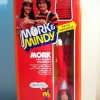
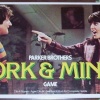
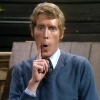
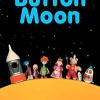

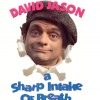
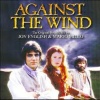
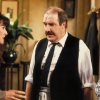
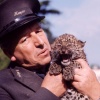
Do You Remember Mork and Mindy?
Do You Remember Mork and Mindy?